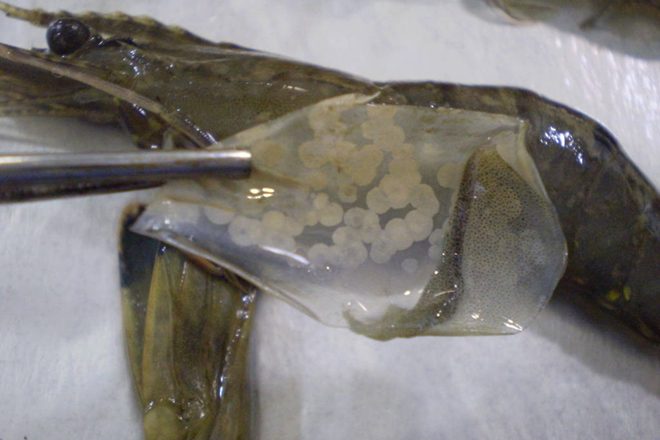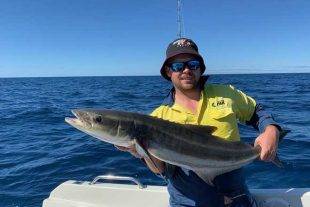Current disease control activities
BIOSECURITY Queensland has completed decontamination and destocking on one of the three confirmed properties infected with white spot disease. Work continues on the second and third property and is expected to be completed this week. To date, about 700,000 litres of chlorine have been used to decontaminate 34 ponds as well as other water channels and settlement ponds.
Surveillance and sampling is continuing on the other five prawn farms in the vicinity as well as in the Logan and Albert rivers. Further testing of samples collected from the Logan River has returned negative results. More results are expected in coming days.
Investigations into the source of the infection are continuing, including testing locally supplied bait, and tracing movement of stock and equipment between properties. Agriculture and Fisheries Minister Bill Byrne met on Sunday with local prawn farmers impacted by the recent white spot disease outbreak. Minister Byrne visited one property that have been affected to discuss their current situation and Biosecurity Queensland’s plan going forward.
Biosecurity Queensland has now provided information packages to each infected premises owner, detailing their particular situation and the likely course of action going forward.
New biosecurity emergency order
To enhance disease control measures, Biosecurity Queensland has replaced the two movement control orders that were in place with a new biosecurity emergency order. The new biosecurity emergency order imposes similar restrictions on the movement of white spot syndrome virus carriers but increases the biosecurity emergency area to include the riverbanks, boat ramps, carparks and inlets. The order also prohibits the intake of water unless a biosecurity instrument permit has been issued by Biosecurity Queensland.
Additionally, the following items are prohibited from use in the biosecurity emergency area:
- Beam trawling;
- Pots, dillies and traps for catching crabs;
- Cast nets;
- Yabby pumps; and
- Implements (such as spades, forks) for digging for worms.
People are reminded that they must not deal with a carrier of white spot syndrome virus, even if they are outside the biosecurity emergency area. This means that they must not keep, possess, use, distribute, dispose, buy, or supply crustaceans or other carriers of the virus if they are suspected or confirmed of having white spot syndrome virus.
Description
WSD is a viral infection that affects crustaceans. Australia has previously been WSD free and this is the first confirmed case we have had in an aquaculture setting. Prawns with WSD may have a loose shell with numerous white spots (0.5-2mm in diameter) on the inside surface of the shell and a pink to red discolouration.
Signs to look for include:
• unusual mortality;
• prawns coming to the edge or water surface of the pond;
• prawns demonstrating unusual swimming patterns; and
• reduced feeding and failure to thrive.
If you suspect a disease on your property, you must report it to Biosecurity Queensland on 13 25 23 or the Emergency Animal Disease Watch Hotline on 1800 675 888. Further information on white spot disease is available from the Department of Agriculture and Water Resources.
 Bush 'n Beach Fishing Magazine Location reports & tips for fishing, boating, camping, kayaking, 4WDing in Queensland and Northern NSW
Bush 'n Beach Fishing Magazine Location reports & tips for fishing, boating, camping, kayaking, 4WDing in Queensland and Northern NSW








